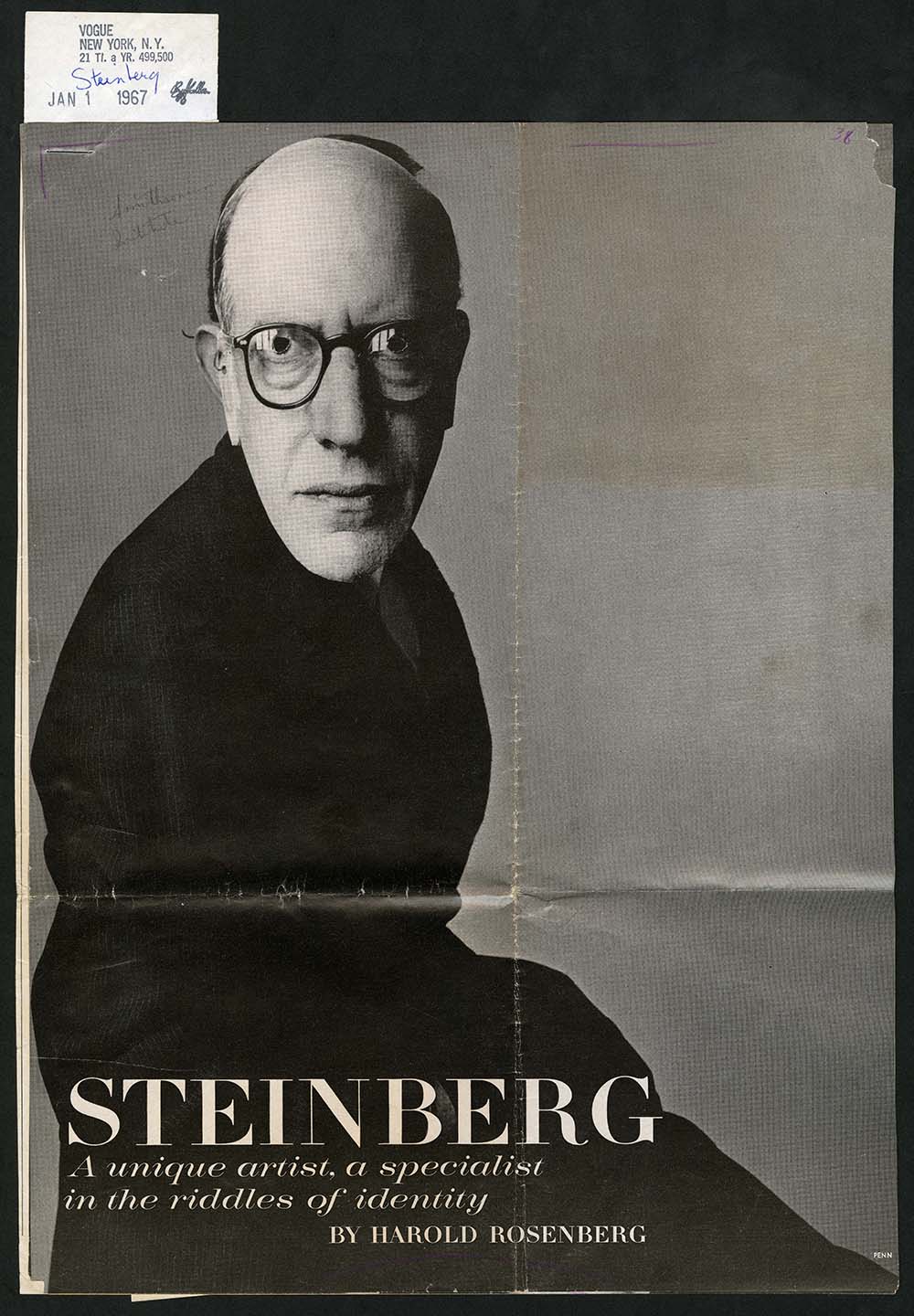 Late 2015, the beta version of the Smithsonian’s Learning Lab, a new digital platform providing access to digital resources across the Smithsonian alongside tools for teachers and students, launched. I was delighted to see a related social media update hinting at some of the discoveries to be had with the Learning Lab, one of which showed Saul Steinberg drawings on Smithsonian letterhead. His iconic drawing style was immediately recognizable from his work as an illustrator at The New Yorker. However, there was no information as to why he was drawing on Smithsonian letterhead which left me no choice but to dig into the archives.
Late 2015, the beta version of the Smithsonian’s Learning Lab, a new digital platform providing access to digital resources across the Smithsonian alongside tools for teachers and students, launched. I was delighted to see a related social media update hinting at some of the discoveries to be had with the Learning Lab, one of which showed Saul Steinberg drawings on Smithsonian letterhead. His iconic drawing style was immediately recognizable from his work as an illustrator at The New Yorker. However, there was no information as to why he was drawing on Smithsonian letterhead which left me no choice but to dig into the archives.
The answer to my question was to be found in the Smithsonian’s Public Affairs files. At some time in the mid-1960s, then Smithsonian Secretary S. Dillon Ripley, decided that the Smithsonian should host an artist-in residence in order to fulfill one of his “goals of a lively university atmosphere within the Smithsonian complex” (Torch Employee Newsletter, June 1966) The first artist-in-residence chosen in 1966, Saul Steinberg, would “have an office in the National Collection of Fine Arts (now the Smithsonian American Art Museum) but will be free to allocate his talents as he sees fit,” according to the Director of Education and Training, Charles Blitzer.
To prepare the wider public for Steinberg’s arrival in April 1967, the Public Information Office drafted a press release announcing the new artist-in-residence program: “Steinberg has accepted a fellowship from the Smithsonian to pursue his personal research interests in American Art and ‘hopefully he may produce some works inspired by the exciting context of our national capital,’ Ripley stated.” It went on to provide a brief bio including some information about his artistic approach, “Steinberg discusses his art quite freely. In a recent issue of Life Magazine, Steinberg stated that he tried in his drawings to make people jittery, ‘by giving them situations that are out of context and contain several interpretations.’”
From this press release, I could see that the Smithsonian was forthcoming about giving Steinberg complete artistic freedom, and, it seemed, anticipated that its choice of artist-in-residence would likely create a stir which indeed arrived soon after.
According to the Art & Activities Monthly, December 1966, “This year’s artist-in-residence at the Smithsonian Institution is the first, and he has caused general comment – both favorable and unfavorable. S. Dillon Ripley says there are no set procedures for selection of either artist-in-residence (a $12,000 appointment) or scholars-in-residence. ‘We simply relied on our own judgment and upon the advice of a number of people consulted informally in the choice of Steinberg.’”
Soon after on January 8, 1967, the Washington Post reported on the difficulty the Smithsonian was having in finding suitable housing in the District for Steinberg, “His creative soul demands elegance and spaciousness…He has been shuttling in and out of Washington, rejecting one house after another… He [Steinberg] wrote S. Dillon Ripley, ‘a poet can write anywhere, a musician can compose anywhere, but an ARTIST must be happy and inspired in his surroundings.’” On Jan 22, 1967, in discussing his upcoming 3-month stay in Washington D.C., Steinberg made his opinion of Washington D.C. clear when he reportedly told the Baltimore Sun, “’I’d have to be drafted’ to stay longer.”
Columnist Grace Glueck of the New York Times had fun with the idea of the “enigmatic” Steinberg hitting buttoned-up D.C.: “If the Smithsonian Institution didn’t exist, cartoonist Saul Steinberg would certainly have invented it. The cluster of buildings on Washington’s Mall that is fondly known as the Nation’s Attic houses 57,000,000 objects, ranging from bat skulls to Engine 1401, a retired Pacific locomotive. They could almost be figments from a scratchy Steinberg pen.” When asked what he would do at the Smithsonian, the National Collection of Fine Art’s (now Smithsonian American Art Museum) director, Dr. David Scott, said, “Maybe stir up our exhibits staff a little, talk with people who drop in, make himself available to the local art community…But after all, the Smithsonian is a visual index of man’s entire culture. Can you imagine turning Steinberg loose on it – and the people who come to visit? If we get nothing more than a set of drawings, we’ll be delighted.”
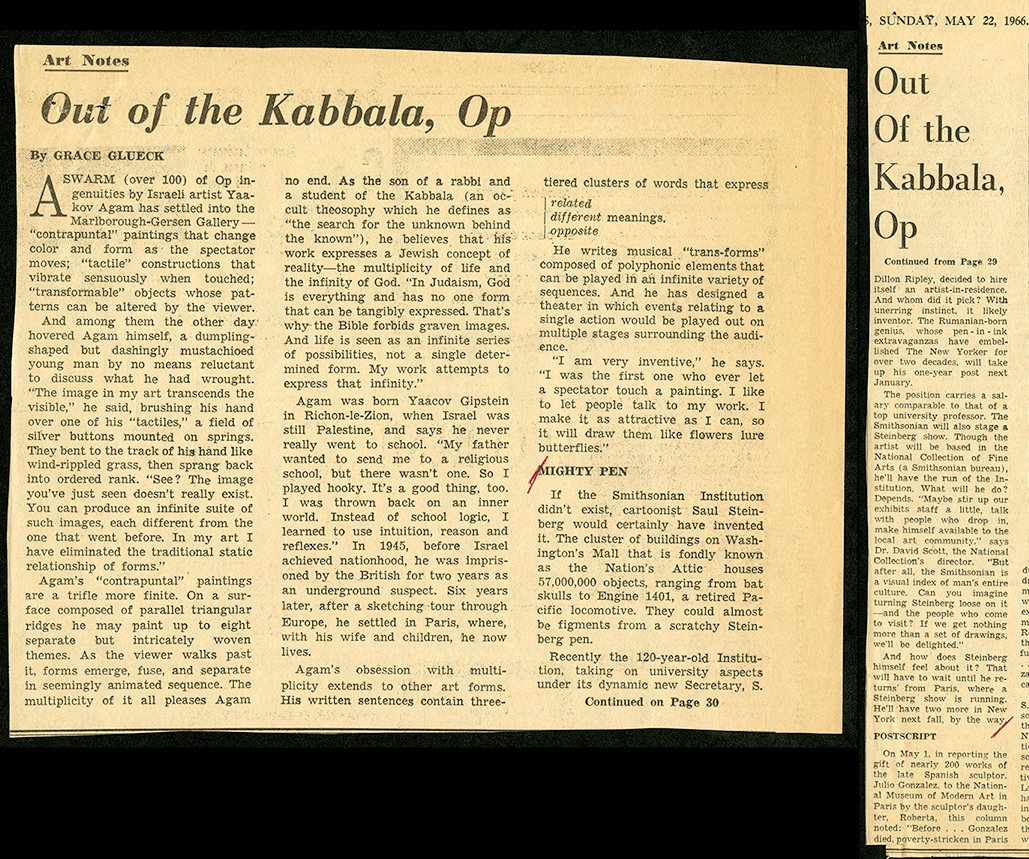
When he arrived in April 1967, he moved into the Georgetown residence of the great-great-great-great grandson of Thomas Jefferson, Harold J. Coolidge, which was decorated with museum-quality collections and outfitted with a staff of four servants. Instead of working in the cubby assigned to him at the National Museum of Natural History, he worked mostly in comfort from the Georgetown mansion. Two months into his stay, when asked by a Smithsonian Torch writer how he’d spent his time, he responded, "The only way to offer hospitality is with no obligations attached… Nothing is ever created in Washington, except in a political sense. Three weeks ago I designed some stage sets for a Stravinsky opera, which were painted in a car barn in Southeast. So my residency has had that effect-in the short time I've been in Washington something has been created here." He went on to caution readers about government intruding in the art world: “…he thinks there are dangers involved in government support of the arts. ‘The disadvantages definitely outweigh the advantages, but that's too deep to go into now.’ The Smithsonian, however, being a ‘philosophical institution,’ has escaped these dangers.” (Torch, April 1967)
Aside from the stage set, we know he completed the series of Smithsonian letterhead drawings which are now in the Smithsonian American Art Museum collection (see selections in the slideshow below), some of which may have been shown on exhibit at the museum in the winter of 1973-4.
Perhaps as striking as his drawings were are the observations he left behind of Washington D.C. which were reported post-residency in the Washington Post, March 16, 1970: “An allegorical city, like living in a coat of arms. No, that’s not quite it. Washington’s like a troopship, or a transatlantic liner…When I was in Washington, I lived in Georgetown, the same as first class. Cabin class? Surely the federal employees. The tourist class is the visitors. And the crew, of course, is the Negro, who provides everything for the passengers. Everyone’s aboard for a four-day trip, which is the tenure of an administration. Everyone wants to be invited to the captain’s table, though the less fortunate settle for a meal with the purser.”
Related Collections
- Saul Steinberg Smithsonian Drawings, Smithsonian American Art Museum
- Smithsonian Institution Office of Public Affairs, Biographical Files, c. 1963-1988, SIA RU000420
Produced by the Smithsonian Institution Archives. For copyright questions, please see the Terms of Use.


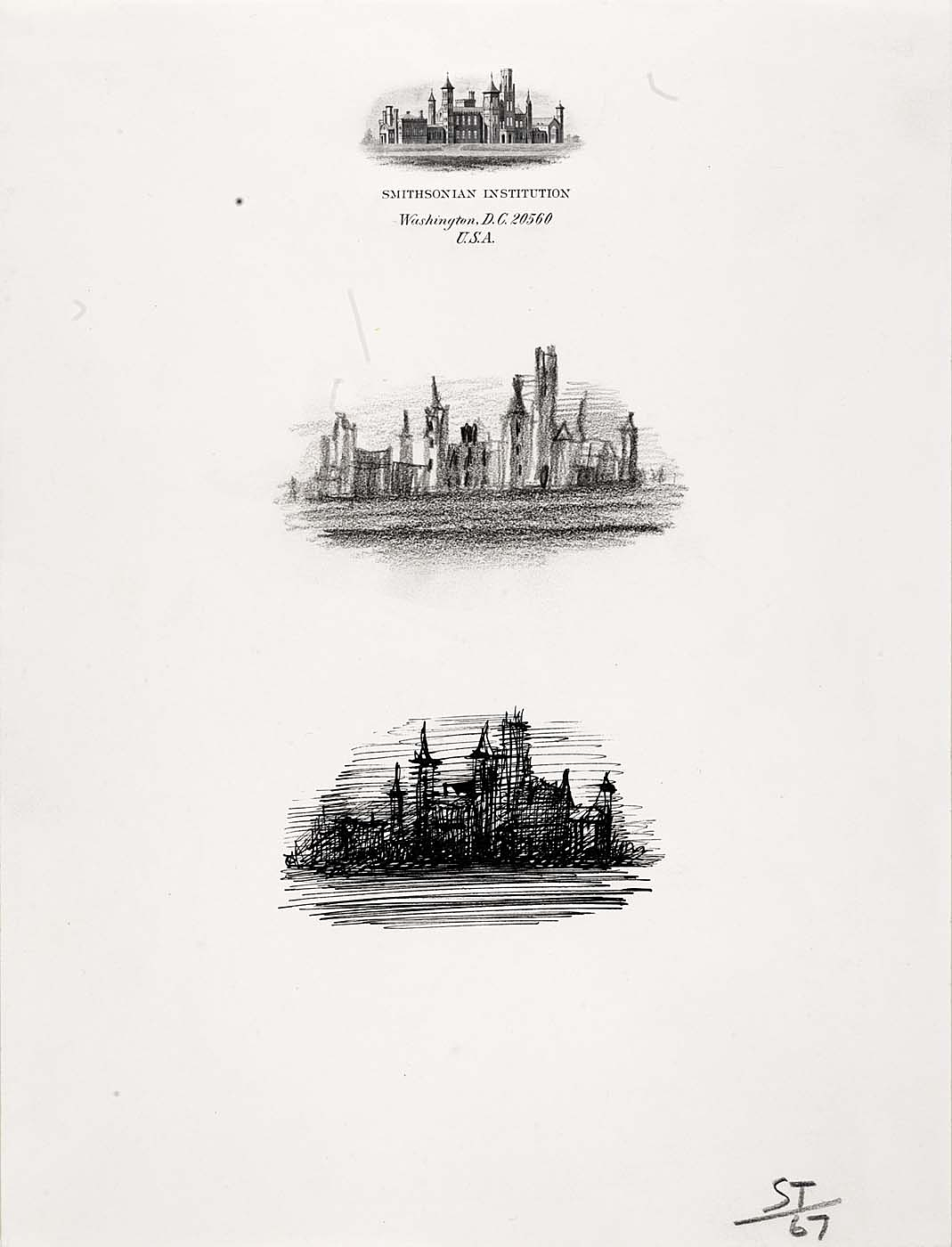
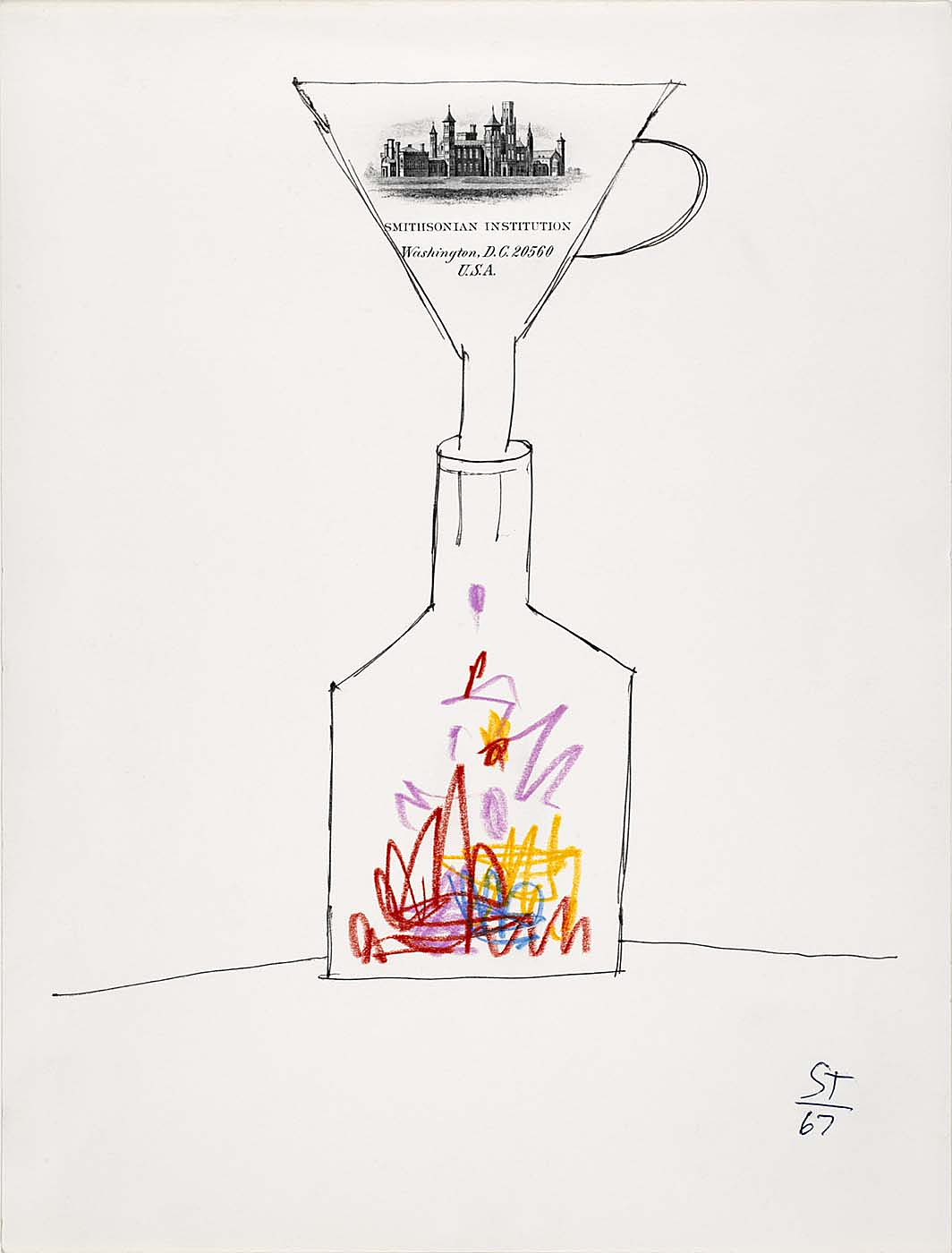
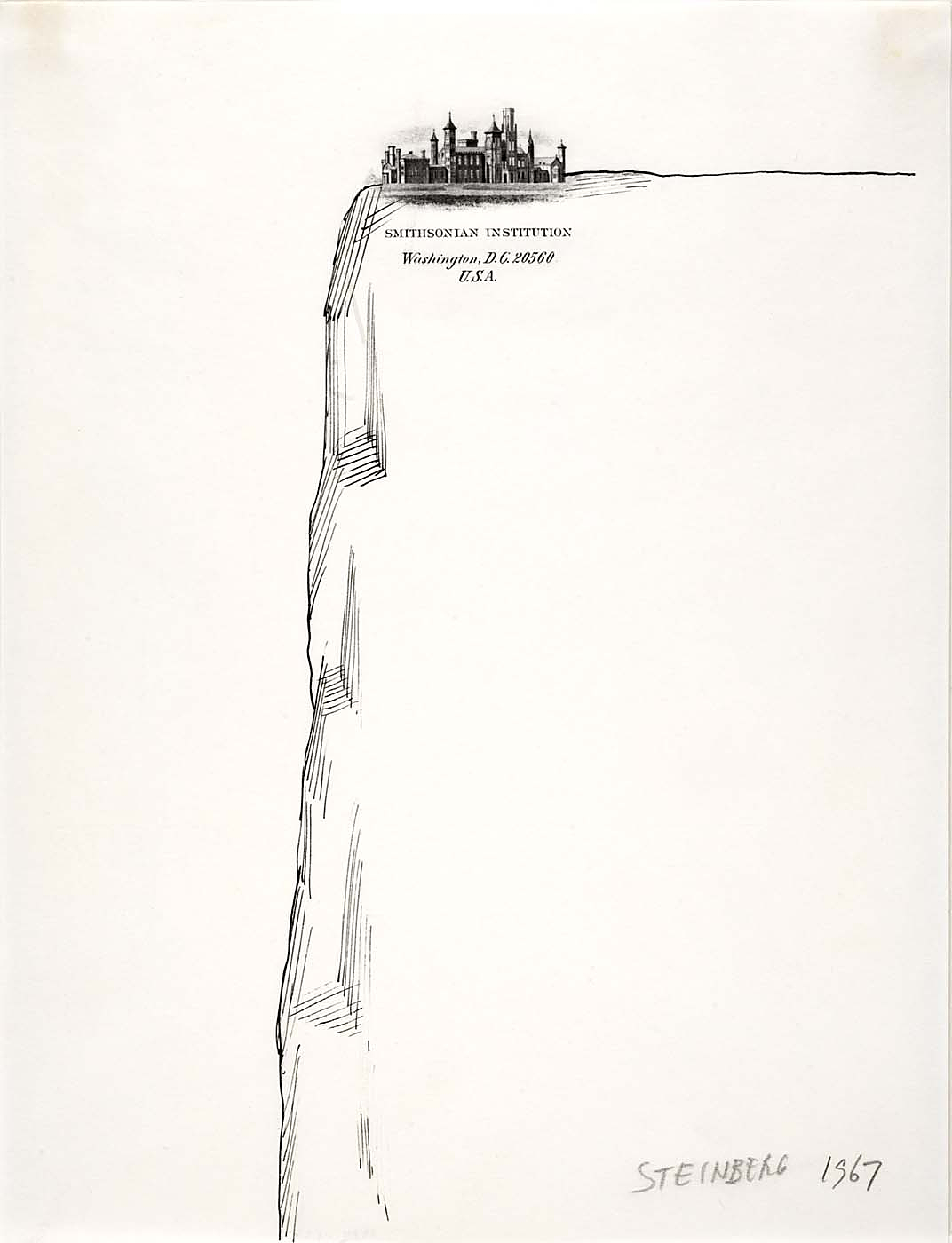


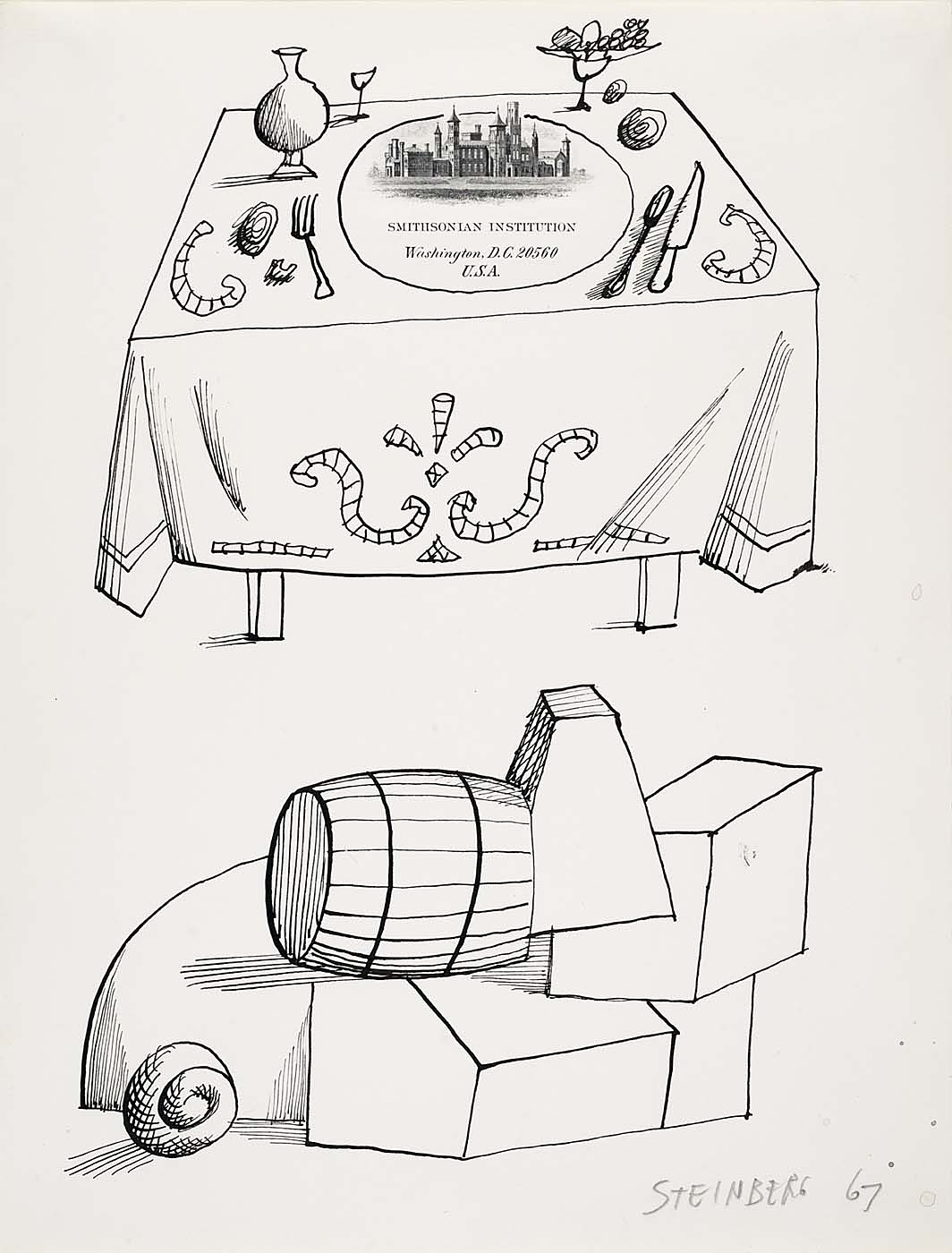
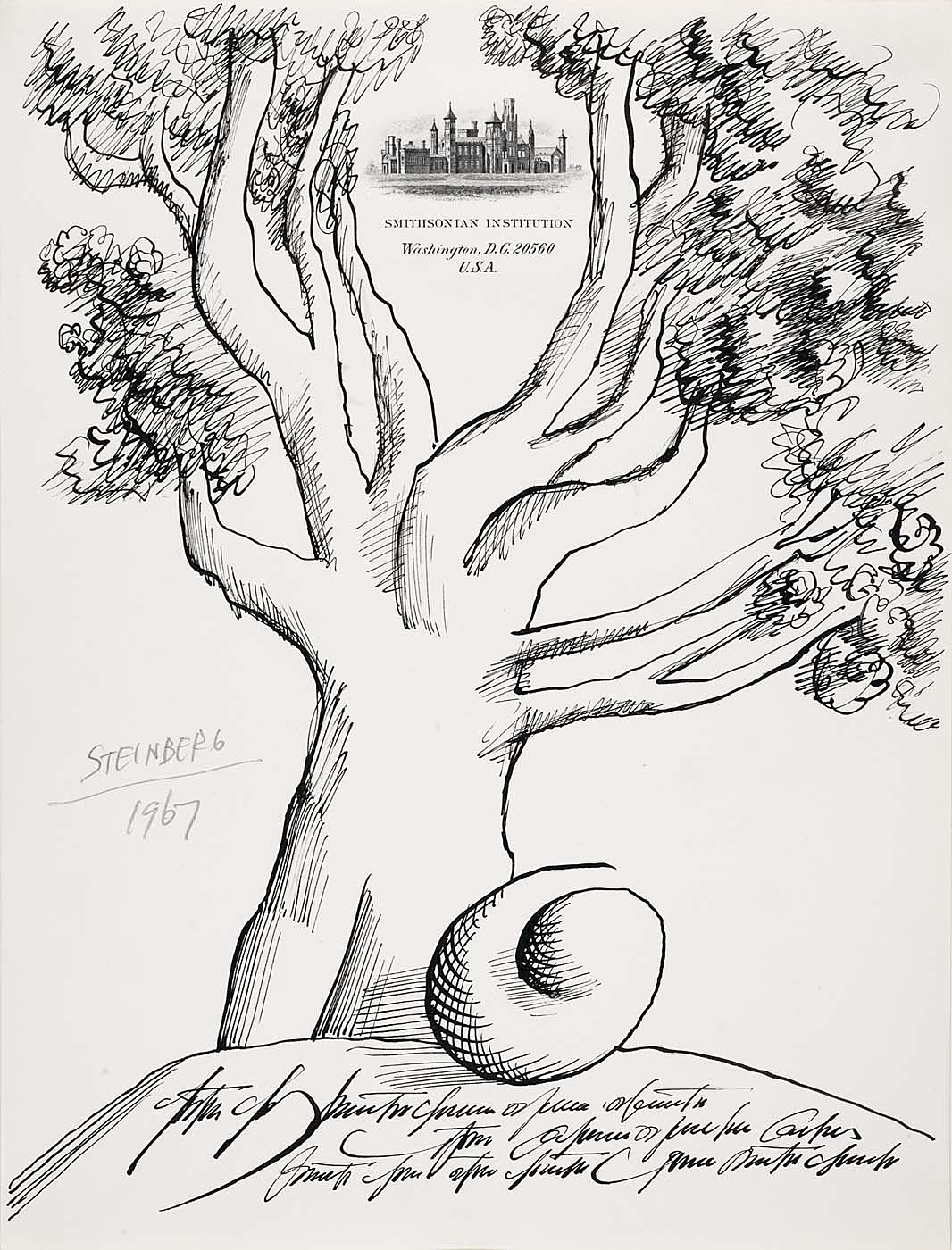

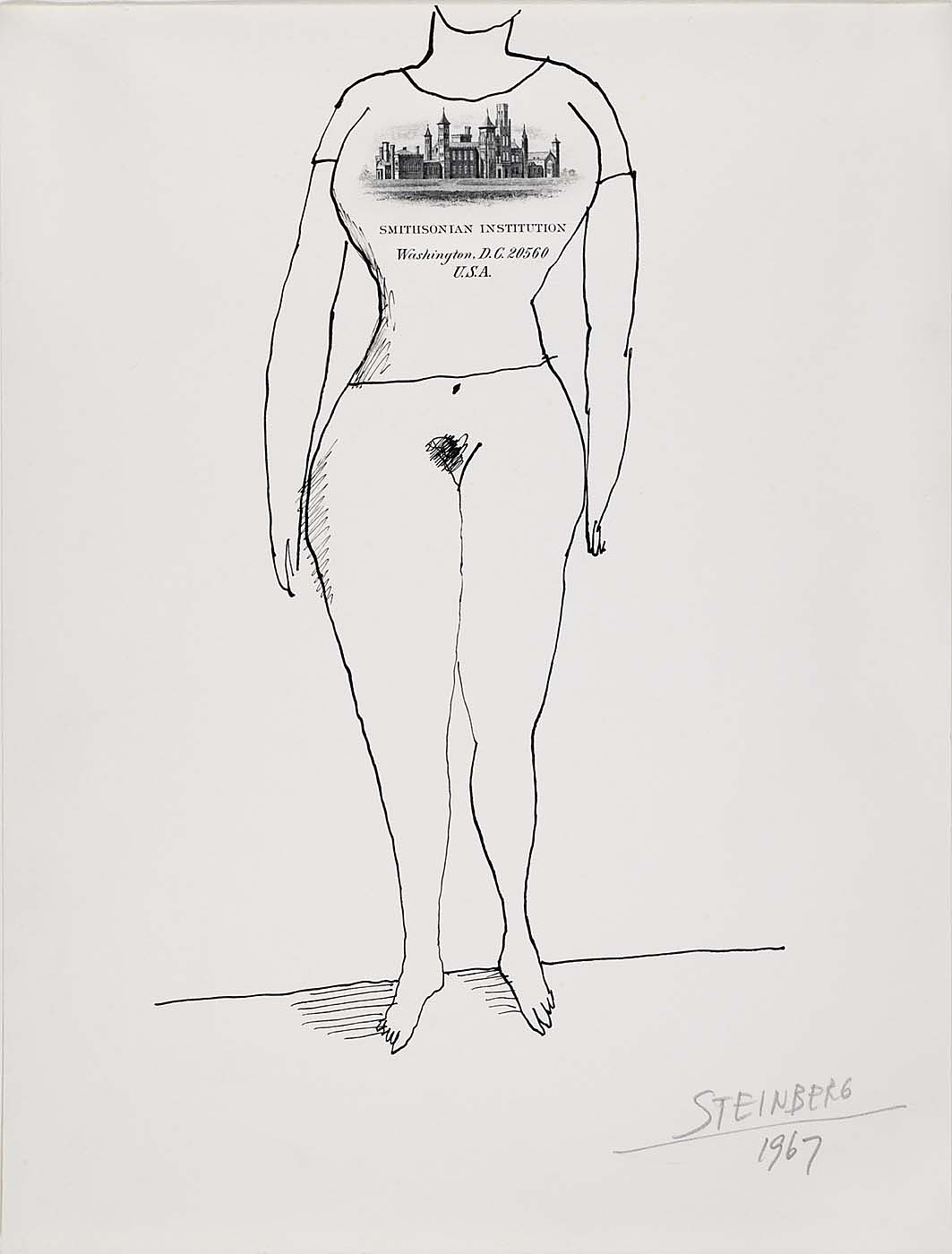
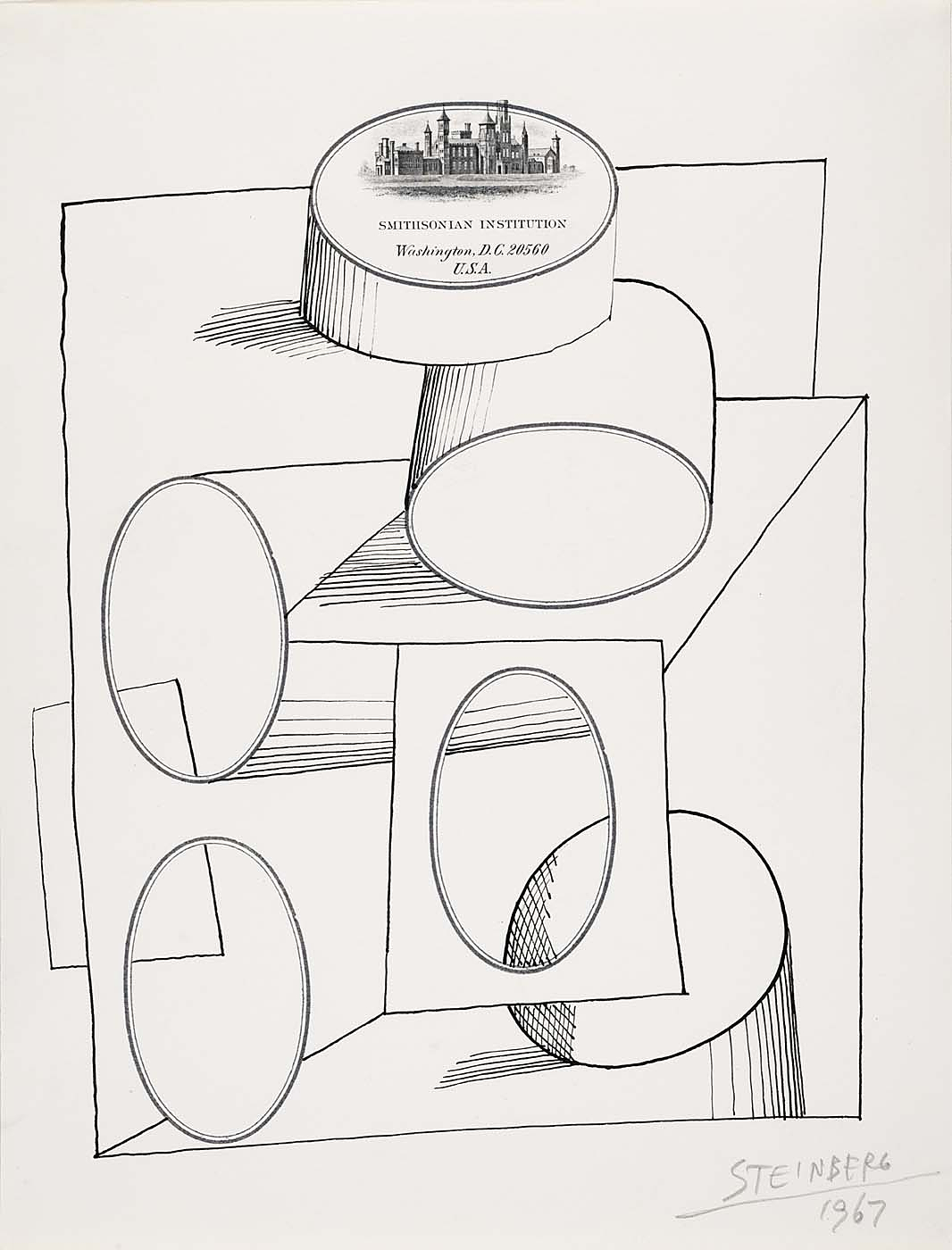

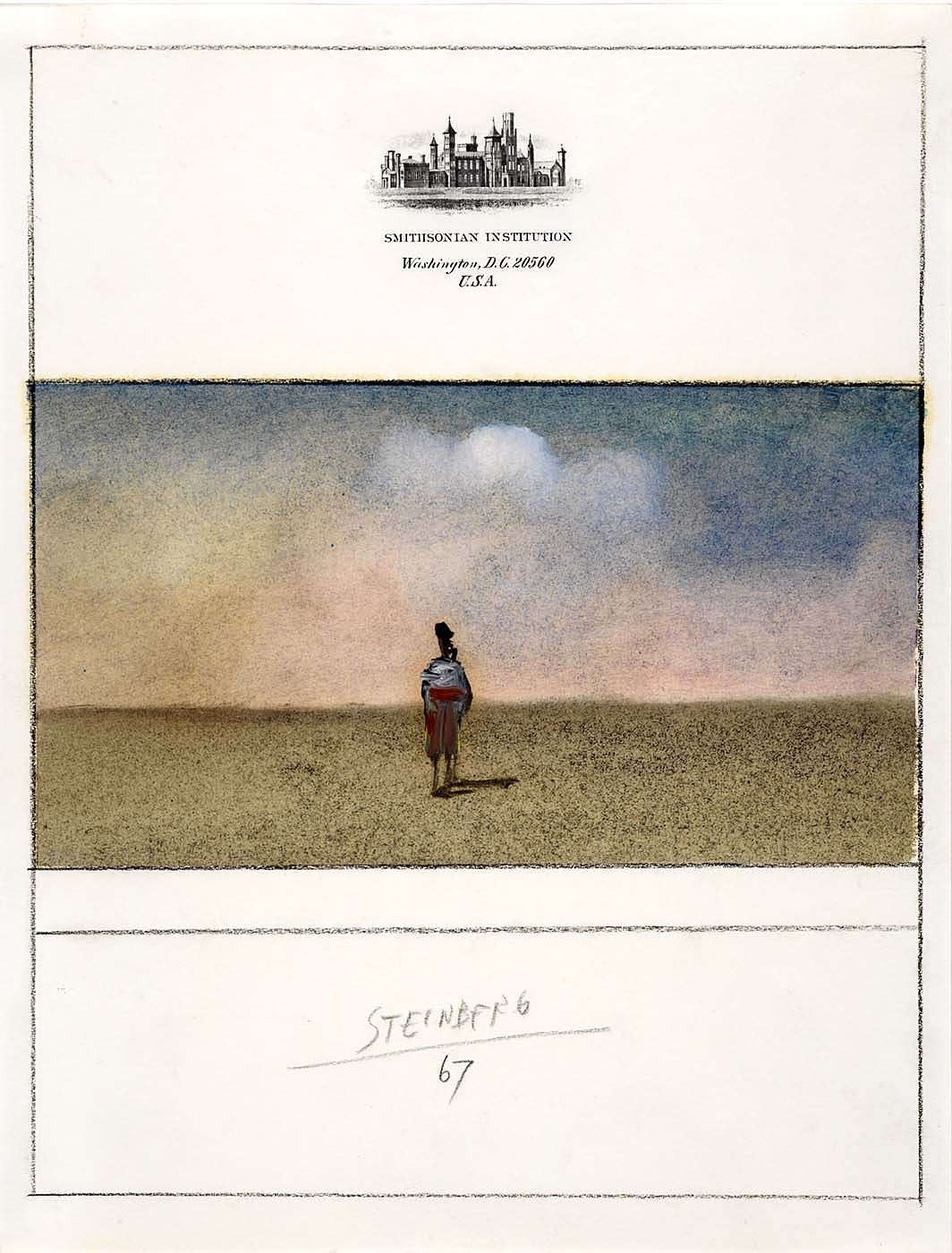
Leave a Comment